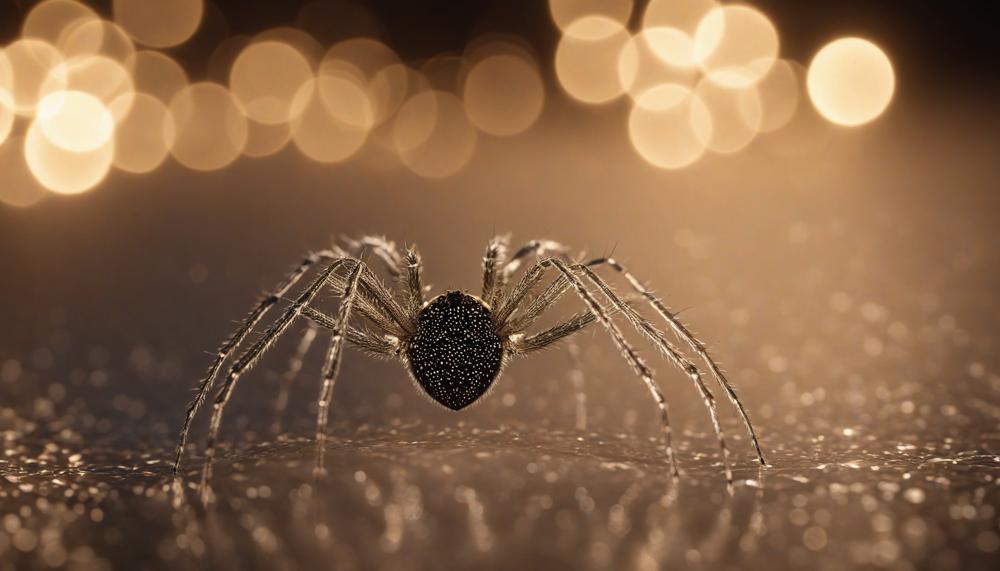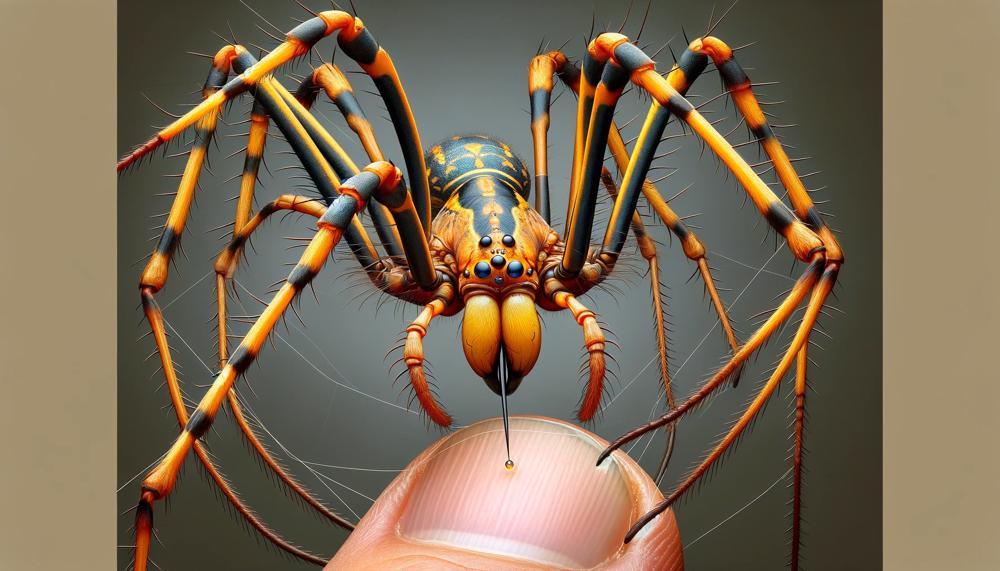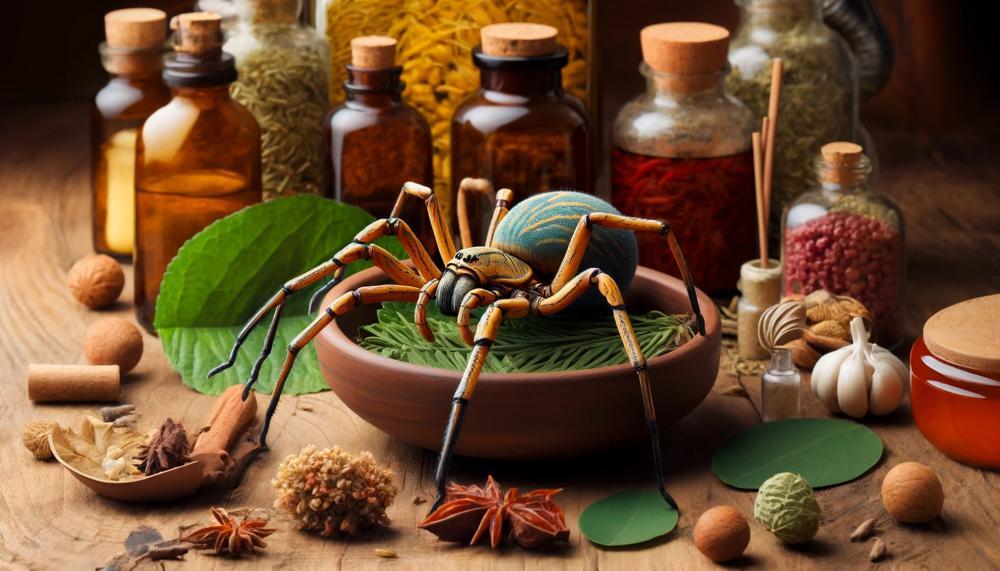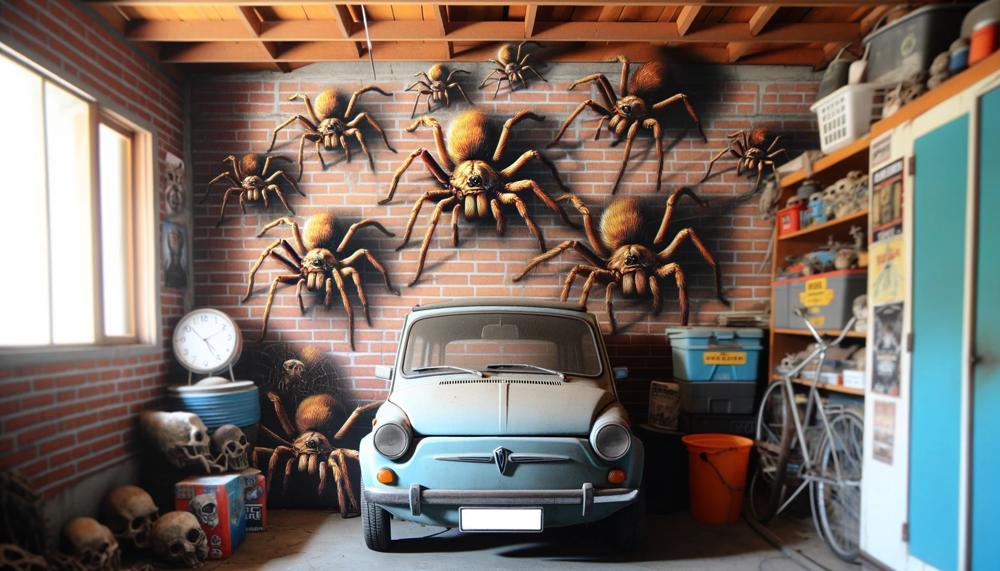Among the marvels of nature, spiders are particularly fascinating because they are a combination of mystery and intrigue. Their reputation often inspires either terror or curiosity, but they also have a unique and interesting hidden biological feature: their hearts.
Despite what the general public believes, spiders do have hearts. By comprehending these amazing organs, one may get insight into the complex mechanisms of these amazing eight-legged creatures.
- Spiders, those captivating creatures that weave intricate webs and inspire both fear and fascination, possess a unique circulatory system that sets them apart from many other animals.
- At the heart of this system lies a remarkable structure: the spider’s heart.
- These hearts are small, tube-like structures located in the front part of their bodies, responsible for pumping a vital fluid called hemolymph throughout their delicate frames.
- Hemolymph, similar to blood in its function, carries oxygen, nutrients, and waste products, ensuring the proper functioning of the spider’s body.
- Join us as we delve into the fascinating world of spider hearts, unraveling the mysteries behind these tiny but essential organs and exploring their significance in the lives of these intriguing creatures.
Table of Contents
- 1 The Unique Structure of a Spider’s Heart: Exploring Its Anatomy and Function
- 2 How Spiders Circulate Blood: Delving into the Open Circulatory System
- 3 Comparing Spider Hearts to Human Hearts: Similarities and Differences
- 4 The Role of the Heart in Spider Physiology: Maintaining Life and Movement
- 5 Spider Heart Rate: Factors Influencing Its Variability
- 6 Heart-Related Adaptations in Spiders: Exploring Evolutionary Strategies
- 7 Conclusion
The Unique Structure of a Spider’s Heart: Exploring Its Anatomy and Function
The unique structure of a spider’s heart, comprising a tubular heart, ostia, and pericardial sac, plays a crucial role in the efficient circulation of blood throughout its body:
- Tubular Heart: The spider’s heart is a long, slender tube that runs along the dorsal side of the body. This structure allows for a more efficient distribution of blood compared to a compact heart, as it can pump blood over a greater distance with each contraction.
- Ostia: The heart has several ostia, or valved openings, along its length. These ostia allow blood to enter the heart from the body cavity. The valves ensure that blood flows in one direction, preventing backflow and maintaining the efficiency of the circulatory system.
- Pericardial Sac: The heart is enclosed within a pericardial sac, a thin, flexible membrane. This sac helps to maintain pressure within the heart, which is necessary for effective pumping. The pericardial sac also provides support and protection for the heart.
Together, these structural features enable the spider’s heart to circulate blood efficiently throughout its body, ensuring that oxygen and nutrients are delivered to all tissues and organs.
How Spiders Circulate Blood: Delving into the Open Circulatory System
| Feature | Open Circulatory System (Spiders) | Closed Circulatory System (Humans) |
|---|---|---|
| Blood Vessels | Open-ended vessels, no distinct arteries or veins | Closed vessels, arteries carry oxygenated blood, veins carry deoxygenated blood |
| Blood Pressure | Low pressure, blood moves slowly | High pressure, blood moves quickly |
| Oxygen Transport | Oxygen diffuses directly from blood into tissues | Oxygen carried by hemoglobin in red blood cells |
| Heart Structure | Dorsal heart with ostia (openings) | Four-chambered heart with valves |
| Blood Composition | Hemolymph (blood and interstitial fluid) | Plasma, red blood cells, white blood cells, and platelets |
| Immune Function | Phagocytic cells in hemolymph | Specialized immune cells (white blood cells) |
In addition to the table, here are some key differences between the open and closed circulatory systems:
- In an open circulatory system, blood is not fully contained within vessels. Instead, it flows freely through body cavities, bathing the organs and tissues directly. This is in contrast to a closed circulatory system, where blood is confined to vessels and does not come into direct contact with the tissues.
- The open circulatory system of spiders is a low-pressure system, meaning that the blood moves slowly and with relatively little force. This is because the heart is not very muscular and does not pump blood with great force. In contrast, the closed circulatory system of humans is a high-pressure system, with the heart pumping blood with great force through the vessels.
- The open circulatory system of spiders lacks specialized blood vessels, such as arteries and veins. Instead, blood simply flows through the body cavity, bathing the organs and tissues. In contrast, the closed circulatory system of humans has specialized blood vessels, with arteries carrying oxygenated blood away from the heart and veins carrying deoxygenated blood back to the heart.
- The open circulatory system of spiders does not have specialized immune cells, such as white blood cells. Instead, phagocytic cells in the hemolymph engulf and destroy foreign particles. In contrast, the closed circulatory system of humans has specialized immune cells, such as white blood cells, which circulate in the blood and help to defend the body against infection.
Comparing Spider Hearts to Human Hearts: Similarities and Differences
| Feature | Spider Heart | Human Heart |
|---|---|---|
| Structure | Tubular, dorsal blood vessel with ostia (openings) | Four-chambered, muscular organ with valves |
| Function | Pumps hemolymph (blood) throughout the body | Pumps oxygenated blood throughout the body |
| Location | Dorsal (back) side of the body | Thoracic cavity, left of the midline |
| Number of chambers | One | Four (two atria, two ventricles) |
| Blood type | Hemolymph (open circulatory system) | Blood (closed circulatory system) |
| Heart rate | Variable, depending on activity level | Regular, controlled by the sinoatrial node |
Despite these similarities, there are also key differences between spider hearts and human hearts. Spider hearts are simpler in structure, with only one chamber and no valves. They also lack a specialized conducting system, such as the sinoatrial node, which regulates the heartbeat in humans.
Additionally, spider hearts are located in the dorsal (back) side of the body, while human hearts are located in the thoracic cavity.
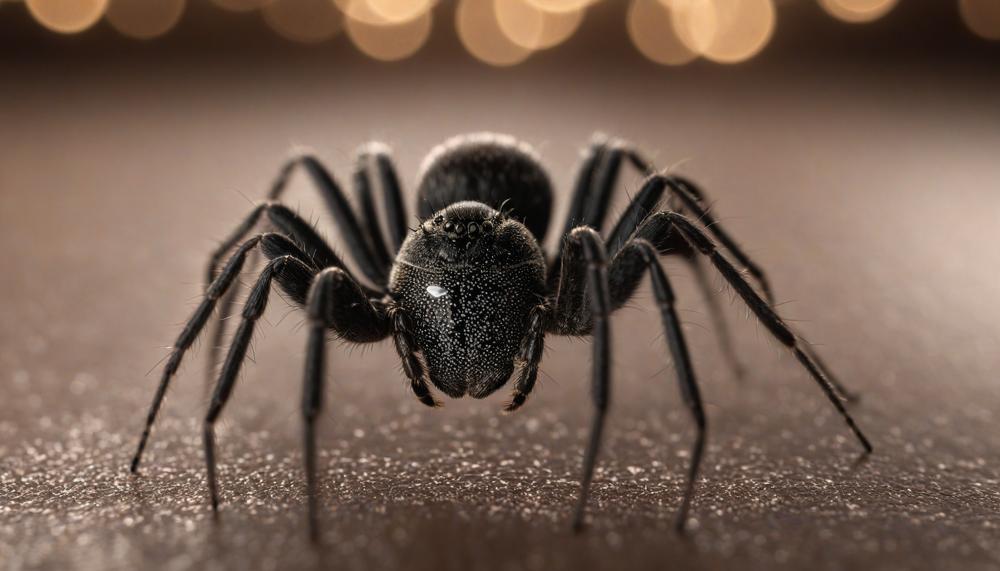
The Role of the Heart in Spider Physiology: Maintaining Life and Movement
| Heart’s Role | Contribution to Spider’s Movement and Survival |
|---|---|
| Pumping Hemolymph | Circulates oxygen and nutrients throughout the body, supporting cellular respiration and energy production. |
| Maintaining Blood Pressure | Ensures adequate blood flow to organs and tissues, facilitating efficient oxygen and nutrient delivery. |
| Waste Removal | Assists in the removal of metabolic waste products, preventing their accumulation and potential harm to the spider’s health. |
| Immunity | Plays a role in the spider’s immune system by transporting immune cells and substances to combat pathogens and infections. |
| Thermoregulation | Helps regulate the spider’s body temperature by distributing heat throughout the body, especially important for spiders living in fluctuating environments. |
Spider Heart Rate: Factors Influencing Its Variability
| Environmental Condition | Effect on Heart Rate |
| Temperature | Increased temperature generally leads to an increase in heart rate. |
| Humidity | High humidity can cause the heart rate to decrease. |
| Barometric Pressure | Changes in barometric pressure can affect the heart rate, with higher pressure leading to a decrease in heart rate. |
| Light Intensity | Exposure to bright light can cause the heart rate to increase. |
| Noise | Loud noises can cause the heart rate to increase. |
Heart-Related Adaptations in Spiders: Exploring Evolutionary Strategies
| Unique Heart Structure | Benefits |
|---|---|
| Multiple Hearts: Spiders possess multiple hearts, typically two or three, depending on the species. | This arrangement ensures a reliable blood supply to various body parts, enhancing circulatory efficiency. |
| Posterior Location: The hearts are positioned in the spider’s abdomen, rather than the thorax as in most insects. | This placement allows for a more compact body form, facilitating agility and maneuverability. |
| Ostia: Spiders’ hearts have numerous openings called ostia, which allow blood to enter the hearts from the body cavity. | This design facilitates efficient blood collection and prevents backflow, ensuring unidirectional blood flow. |
| Pericardial Sac: The hearts are enclosed within a pericardial sac, a protective membrane that prevents their collapse and maintains their shape. | This structure ensures the hearts’ integrity and proper functioning during body movements. |
Conclusion
Among the marvels of nature, spiders are particularly remarkable due to their alluring combination of mystery and intrigue. Their unusual circulatory system, which includes a miraculous heart that pumps life through their fragile bodies, is one intriguing part of their biology. In spite of common belief, spiders do have hearts, and comprehending these complex organs provides insight into the inner workings of these amazing eight-legged creatures.
Despite their tiny size and tube-like shape, spiders’ hearts are very important for the circulation of hemolymph, the critical fluid that distributes waste products, minerals, and oxygen throughout their bodies. Because of their amazing circulatory system, which is different from humans’ closed circulatory systems, spiders are able to sustain their complex physiological processes and flourish in a variety of environments.
Although spider hearts are not as complicated or structured as human hearts, they nonetheless have the same function—that is, to support life and movement. Spider hearts effectively pump hemolymph, supplying oxygen and nutrients to every part of their bodies to enable immune system response, waste elimination, and cellular respiration.
Even though it’s tiny and often disregarded, the spider’s heart is a monument to the amazing intricacy and variety of nature. Due in part to its distinct shape and purpose, the spider can survive in a variety of habitats, demonstrating the amazing adaptations that have enabled these amazing animals to exist for millions of years.

